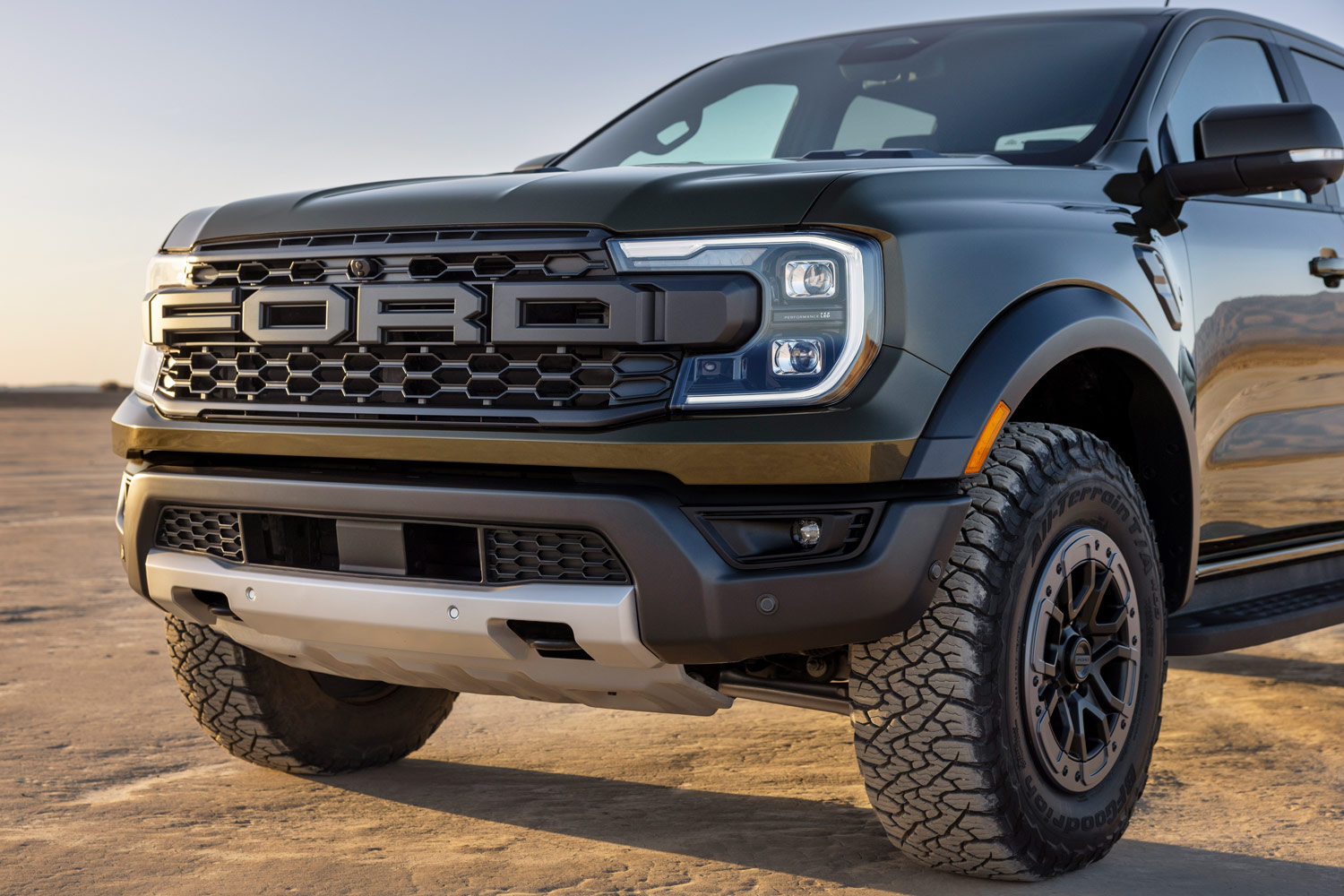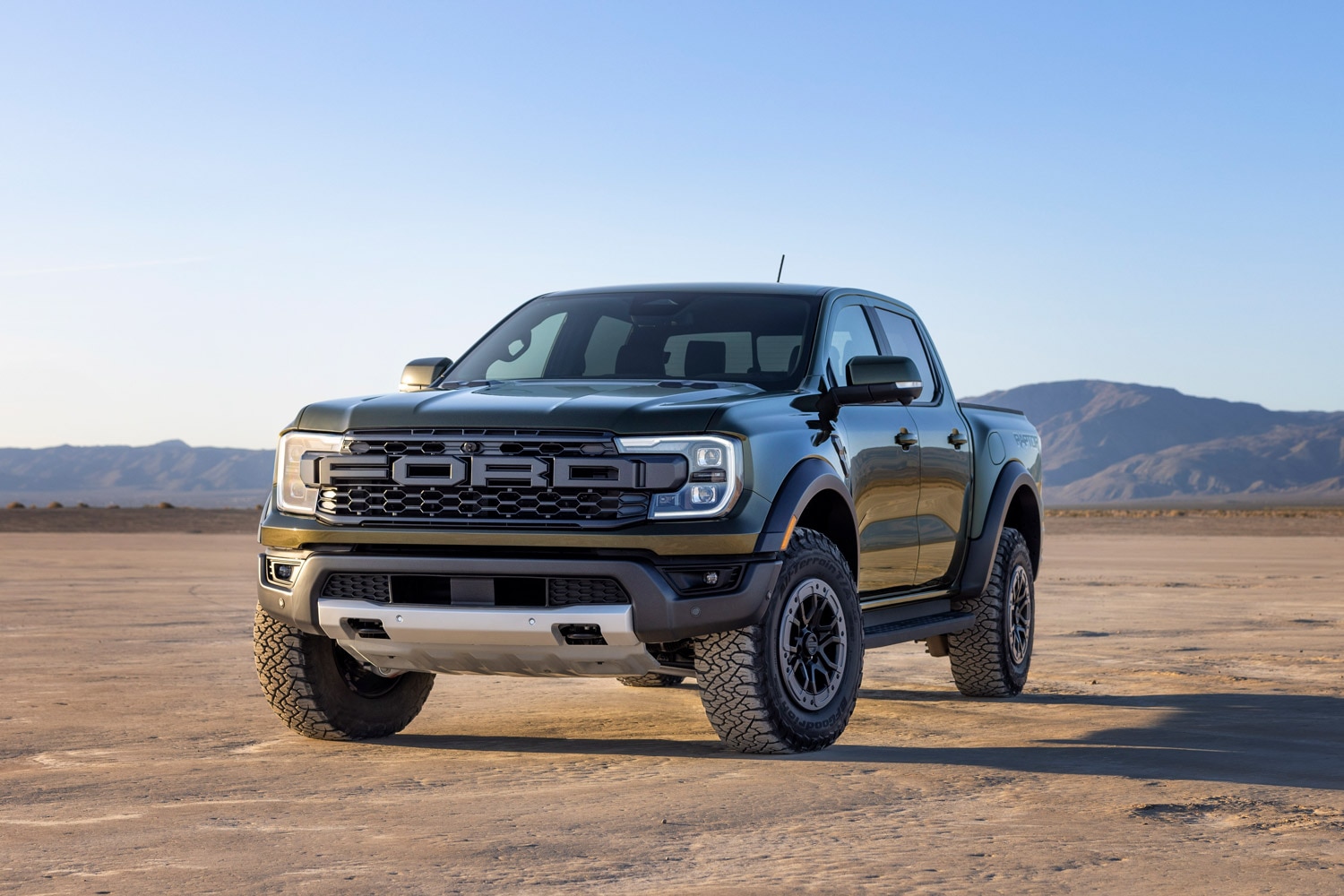Lifting a Ford Ranger: What You Need to Know
Ford's midsize truck can get an off-roading boost with a lift kit.
 Ford
Ford
Article QuickTakes:
The current generation of Ford Ranger midsize pickup trucks, which began with the 2019 model year, comes standard with competitive power, towing, and payload ratings. For buyers looking for some additional ground clearance, Ford offers its Tremor Off-Road Package with a 0.8-inch suspension lift, larger 32-inch tires, and Fox shocks for off-road fun. But that lift only gives you 9.7 inches of ground clearance. If you want to get more serious than a Tremor but don't want to spring for a Ranger Raptor, you'll need to install a lift kit.
 Ford
Ford
The best type of lift kit for your Ford Ranger
While you could install a body lift kit on your Ranger, that won't get you any extra ground clearance. Body lifts are inexpensive but primarily for looks. If all you want to do is fit some slightly larger, more aggressive wheels and tires, a body lift might offer the right amount of extra space.
A suspension lift, however, will raise both the frame and the body from the axle, giving the vehicle more space for bigger tires and allowing low-hanging components under the truck to clear off-road obstacles. You can also get a leveling kit that will lift the front of your truck to level its ride height.
Suspension lift kits in the aftermarket can raise your Ranger from 1 inch to 6 inches. The height depends on how you intend to use your truck. If you tow a lot, you don't want to lift your vehicle too high or the trailer will be unstable. However, you may be able to solve that with a drop hitch.
If you commute in your Ranger, adding extra height and larger, heavier tires will noticeably reduce the truck's fuel economy. If your goal is rock crawling, however, the benefits when off-roading could offset the sacrifice at the fuel pump. Remember to balance any trade-offs to practicality with your specific use case when considering which lift kit to install on your Ranger.
 Ford
Ford
Other modifications to consider
Kits with more than 2 inches of lift will likely require other modifications. You might need to swap out your stock wheels for something with a specific backspace (the measurement from the wheel's mounting surface to its back lip) and width. You might also need to modify your exhaust or add longer steel brake lines.
Depending on the resulting suspension geometry, your truck's axles could be at an angle that's too steep. Be prepared to drop the differential, upgrade your CV joints, or likely both. You may also want to consider re-gearing your differential if you've upgraded to substantially larger wheels and tires.
You'll also want to add a set of front upper control arms designed for the increased ride height to help with high-speed maneuvers and to retain your alignment.
Pricing for Ranger Lift Kits Varies
When shopping for a lift kit, remember that not all kits contain the same amount of hardware and kit prices increase with the number of major items added. There are many options on the market. Consider your use case, read reviews, and do your homework before making a purchase.
For example,
If you own a first- or second-generation (1983 to 1997 model years) Ranger,
Whichever Ford Ranger lift kit you go for, remember that it may void parts of your factory warranty, so do your research before you commit.



